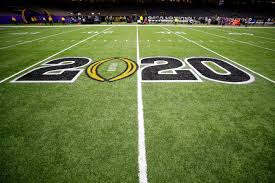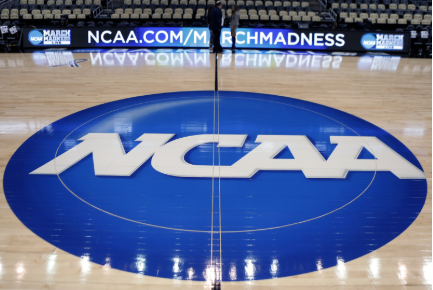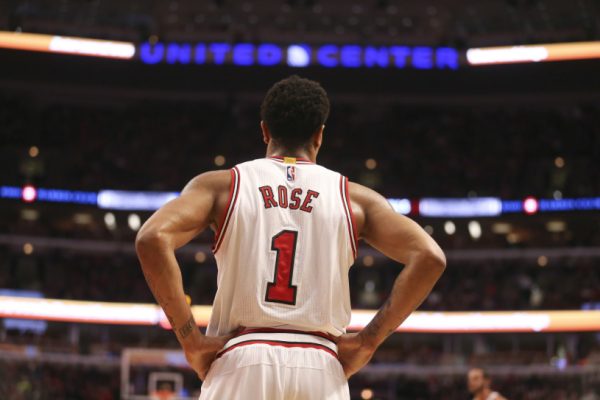How COVID-19 has affected college football
The true barometer of a team’s commitment to safety will not be when a coach says they will be safe, but when a big-time, game changing player tests positive.

Photo via Todd Kirkland/Icon Sportswire/Getty Images
The COVID-19 pandemic disrupted the day to day lives of everyone in America in the blink of an eye. Earlier in the year, the thought of wearing a mask when in public was preposterous and something that seemed unthinkable. Now, the world has changed greatly. Sports are not exempt from this rapid change. Specifically, college football has seen some of the most dramatic change in the country. One of the biggest storylines heading into this college football season was the fact that so many schools had a chance to compete for the National Championship. Currently, there are doubts about whether or not it will even happen. The changes that have been made, or haven’t been made can open up a can of worms the NCAA will regret opening.
To analyze the situation properly, there needs to be an evaluation of the parties involved. The NCAA is a giant organization that oversees not only college football and basketball, but all of college sports. From Division I to Division III, they oversee it all. The governing board is run by Mark Emmert, the head of the NCAA. For years, the NCAA has been touted as one of the most corrupt organizations in the country, along with FIFA and the Olympics. Nonetheless, they are a powerful organization that stretches far beyond sports. As with any large organization, they have large, gapping issues that seem to be covered up with patchwork repairs. They have been fighting against paying athletes, one of the main struggles seen in the NCAA, and additionally have seen many notable figures speak out about the poorly run organization. Through all of the criticism, the NCAA continues to stay alive, and for the most part, out of the news cycle.
The COVID-19 crisis reared its head in the sports world when in early March, the NCAA was preparing for the world renowned March Madness basketball tournament where they crown a champion. The pandemic had other ideas, forcing the NCAA to cancel the tournament, and with it, a large amount of the revenue stream for the year. As all other professional leagues took a sabbatical to let the virus pass (which it still hasn’t), the NCAA tried everything to get back into action. Finally, after months of deliberation, they decided on something that appeared to be very unexciting. They decided that each individual conference could decide their fates, and whether or not they would play in the fall. This seemed like a move that the NCAA made to be exempt from any blame targeted to a conference’s decision to play or not play. The words “weak” and “indecisive” were used to describe the organization, and sent them into a negative spiral. All things considered, no matter what the NCAA did in this situation, it would most certainly be seen as the wrong decision.
Through all of the criticism and negative press, the NCAA still said they would be having a fall season if conferences devised a plan to do so safely. Many smaller conferences, like the Mid-American Conference (MAC) and the Ivy League decided not to participate in the fall season. This sent shockwaves through the sports world as this meant these teams would not have a football season, once again taking away a large revenue source from the school. Those shockwaves were nothing compared to those of the Big Ten when they decided to withdraw from all fall competitions. The Big Ten is, historically, one of the best, most competitive conferences in the country and for them to withdraw made for a huge discussion on if schools should compete this fall. Besides the Big Ten, the PAC-12 conference (the major conference on the West Coast) also withdrew days after the Big Ten. With two of the five biggest conferences not competing, the NCAA was forced to make a decision regarding the fall season. They took a page out of their previous playbook and left it up to the conferences to make that decision. The other conferences said they would put in safety protocols to keep players safe, and that they would keep playing this fall.
Recently, the football programs at the participating schools have been seeing rapid rises in positive COVID-19 tests, and some coaches have gone on record to say they don’t care about that. Regardless of their feelings, the college football season kicked off recently, and the games have been nothing short of disappointing. This has nothing to do with the players, quality of play, or the coaching, but it has to do with how the game feels. College football relies on the crowd atmosphere as heavily as any sport in the country. Games without fans, or with a small amount of fans, makes the games feel pointless or for some, unwatchable.
In the past days, the Big Ten has announced their return to play plan that includes their first game in late October. This came one week after the rest of college football returned and after public outcry from players to return to action. Although the conference has stated they intend to follow safety protocols, it does not hide the fact that players are playing a contact sport, traveling to different parts of the country on a weekly basis against others who have also been traveling across the country against other teams who have been traveling across the country, and so on and so forth.
This move can be looked at in two different ways: monetarily and logistically. Monetarily, the move is a slam dunk, restoring the teams to television regains a very large sum into the pocket of the conference. There is no way around the fact that this benefits the college quite a bit. Logistically, it could be viewed as shaky at best. These players are exposed to the virus possibly as much as anyone, and although coaches have said they will comply, it seems unlikely that if a team’s star quarterback tests positive that a team will sit him or suspend their season. It seems more likely that the team would keep playing him due to the cutthroat culture of college football. This culture has seen players who are in some cases 19 or 20 years old, publicly crucified for a mistake on national television. While it is unhealthy, that does not take away from the fact that college football is must-watch TV whenever it is aired. The fact that players have so much pressure put upon them from such a young age makes the sport so much more lucrative, forcing the level of play to increase, which in turn draws more viewers, which brings in more money for the school, which brings in better players to the team, and the cycle continues.
When watching anything from the sports world in the past few months, the word “unique” and “different” have been used constantly. These words will continue to be used incessantly, and while they are true, should not be the biggest speaking point of the season. The biggest part of this season will be how college programs handle Covid-19 with the virus spreading like wildfire on the campus. The true barometer of a team’s commitment to safety will not be when a coach says they will be safe, but when a big-time, game changing player tests positive. That will be the most pivotal decision for the institution and NCAA to make. No matter what happens, this season will be full of storylines on and off the field for each and every team participating. What happens next is a mystery, but it will be very imperative for the future of college football and the NCAA.

Marc is a senior at South Lakes and is the Editor in Chief of The Sentinel. This is his 4th year on staff, and third as an editor. Outside of writing for...














